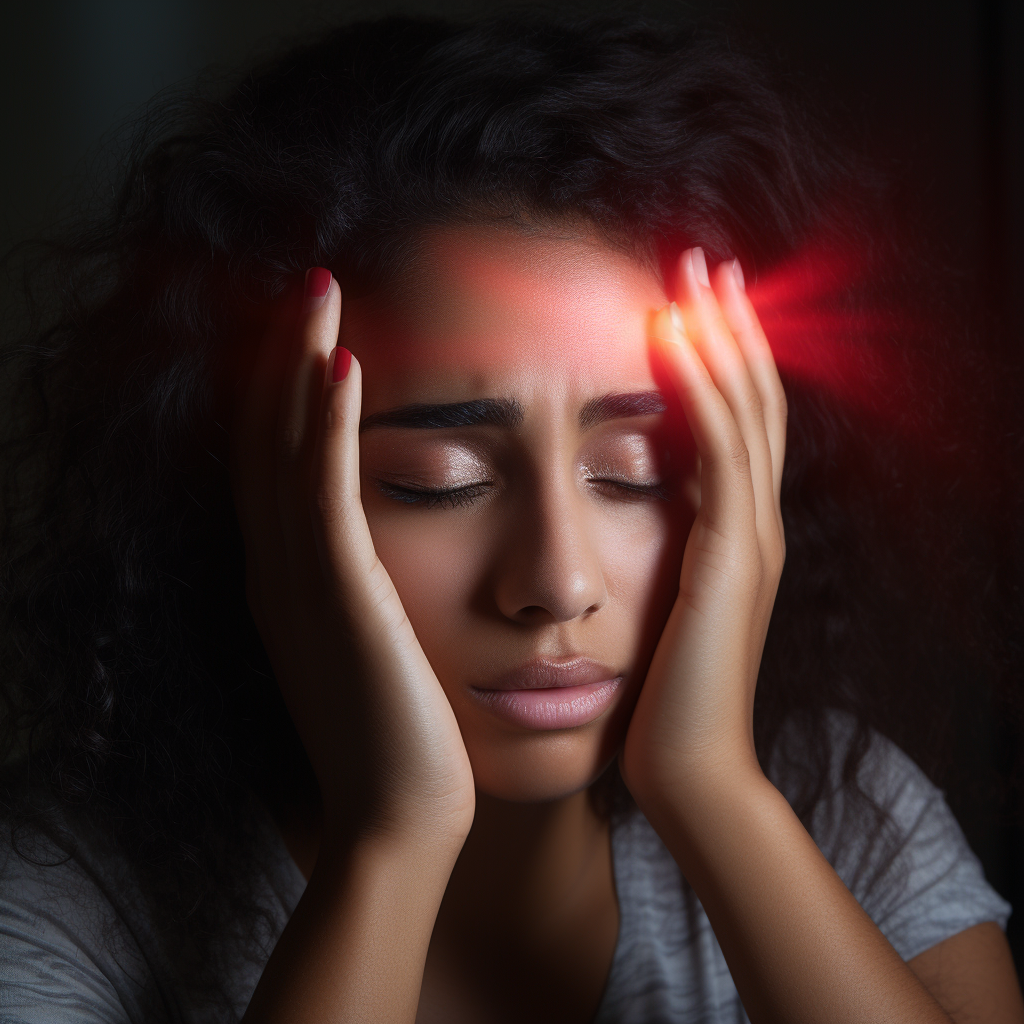When it comes to choosing effective, efficient lighting solutions for your business, compact fluorescent lights (CFL) may seem like a tempting option. After all, they are known for their bright and long-lasting illumination. But, have you ever stopped to consider — are fluorescent lights bad for you?
This question seems to buzz around frequently these days with growing concerns about the impacts of different light sources on health and well-being.
In this guide, we'll explore the dangers and side effects of compact fluorescent lamps, and why switching to LED lighting solutions may be a safer and smarter choice for your business.
Are fluorescent light bulbs dangerous?
Yes, fluorescent light bulbs can be dangerous. They contain a small amount of mercury — a toxic element that can harm the environment and pose a hazard when bulbs are broken or disposed of improperly. It is important to handle and dispose of these bulbs with care to prevent environmental contamination.
Typical fluorescent tubes contain approximately 2 to 5 milligrams of mercury. If broken, the mercury in this artificial light vaporizes and if inhaled, can be extremely harmful to the lungs, nervous system, and kidneys.
In addition, improper disposal of CFL bulbs can lead to mercury contamination in landfills, potentially impacting the surrounding ecosystem.
What gas is in fluorescent lights?
Fluorescent lights contain a mixture of argon and mercury vapor. When electrified, these gases emit ultraviolet light that stimulates a phosphor coating inside the bulb, producing visible light. This process, while effective for illumination, carries risks that you need to be aware of to ensure optimal safety.
In addition to the inclusion of mercury (as discussed above), argon, although not toxic, can displace oxygen in a closed space if a bulb is broken, causing potential breathing difficulties. Moreover, the ultraviolet light emission can cause skin irritations and eye problems with prolonged exposure.
Therefore, while fluorescent lights have been a popular choice for many years due to their energy efficiency and long lifespan, the risks associated with their use, specifically the mercury content and UV emissions, present a compelling case for considering safer and more environmentally friendly alternatives, such as LED lighting.
When it comes to LED vs fluorescent lights, there are a wealth of benefits for going for LED lighting solutions over traditional fluorescent bulbs. LEDs don't contain mercury, and they convert energy to light more efficiently, reducing running costs and serving as a sustainable choice for businesses.
If you're considering a switch away from fluorescent lights to LED, get in touch with us today!
Why are fluorescent lights bad for you?
Fluorescent lights can cause health problems due to the mercury they contain and the ultraviolet light they emit. Long-term exposure can lead to skin irritations, eye problems, and in rare cases, mercury poisoning. Switching to LED lights, which are mercury-free and emit less UV light, mitigates these risks.
The negative effects of fluorescent lights
There are numerous fluorescent light side effects you should be aware of for the health and productivity of your staff.
Continuous exposure to this type of lighting can lead to several physiological and psychological issues that could hinder the overall performance and well-being of your workforce.
- Headaches and eye strain
- Aggravated sleep disorders
- Increased stress and anxiety
- Skin rashes and dermatological issues
- Fluorescent light sensitivity
Headaches and eye strain
Fluorescent lighting is often associated with headaches and eye strain, particularly among those exposed to it for extended periods.
The high-intensity and excessive flickering can strain the eyes, leading to discomfort and headaches. This is particularly the case in office environments where employees spend the majority of their day working under fluorescent lighting.
On the contrary, LED lights offer a much softer and consistent illumination, significantly reducing the strain on the eyes. Because they do not flicker or emit harsh light, they are far more welcoming to human eyes.

Aggravated sleep disorders
Blue light is a potent suppressor of melatonin. Fluorescent lights emit high levels of blue light, which can interfere with the body's natural sleep hormone and disrupt our circadian rhythm. This disruption can lead to difficulty falling or staying asleep, ultimately impacting an employee's focus and productivity at work.
Moreover, individuals who already struggle with sleep disorders such as insomnia may find that fluorescent lighting exacerbates their condition. Lack of sleep or poor-quality sleep can lead to decreased focus, low energy, and impaired decision-making abilities, all of which can ultimately affect the bottom line of any business.
Increased stress and anxiety
The harsh, unnatural light produced by fluorescent bulbs has been associated with heightened stress and anxiety levels. The flickering light and its high color temperature can lead to a stressful work environment, potentially impacting employee morale and productivity in a negative way.
According to a study published in the National Library of Medicine, exposure to blue-light, similar to the light emitted by fluorescents, can lead to increased anxiety. This further highlights the importance of prioritizing lighting options that promote a calmer and more comfortable work environment.
For example, in the case of LED hospital lighting, researchers have found that using LED lights can significantly improve patient mood and reduce stress levels. This is attributed to the color temperature and high color rendering index (CRI) of LEDs, which provide a more natural lighting experience and promote relaxation.
Skin rashes and dermatological issues
Fluorescent lights emit a significant amount of ultraviolet (UV) radiation, which can lead to various skin conditions and dermal sensitivities. Prolonged exposure to these bulbs can cause rashes and hypersensitivity, particularly in individuals with conditions like systemic lupus erythematosus (SLE) and dermatitis.
According to one European study on public health, fluorescent lighting can exacerbate skin conditions in individuals sensitive to light. Conversely, LED lights do not emit harmful UV radiation, making them a safer choice for businesses aiming to create a healthier work environment.
Fluorescent light sensitivity
Fluorescent lights, due to their flickering and stark brightness, can trigger light-induced headaches and exacerbate the condition known as photophobia.
As per the National Headache Foundation, individuals suffering from photophobia can experience severe pain and discomfort in the presence of bright lights. Fluorescent lighting, in particular, is a common trigger due to its high intensity and rapid flickering, which can be overwhelming for the visual system, leading to eye strain and headaches.
The color spectrum of light emitted by fluorescent bulbs also contains blue light, which is known to trigger photophobic responses. Individuals who experience this sensitivity are likely to have difficulty working in environments with fluorescent lighting, causing a hindrance to their productivity and overall well-being.
Fluorescent light sensitivity symptoms
- Recurring migraines at work
- Blurred vision and progressive sensitivity to bright light
- Unease and nausea
- Dizziness and imbalance
- Increased irritability
Businesses in need of fluorescent light sensitivity solutions can benefit significantly from switching to LED lighting.
By reducing harsh light, flicker, and blue light emission, employees with photophobia or general sensitivity to fluorescent lights can work comfortably without experiencing debilitating symptoms.
Removing fluorescent lighting dangers from your workplace
With all the potential hazards of fluorescent lighting, it's time to consider a safer, more efficient solution for your workplace. At FES Lighting, we specialize in providing businesses with LED commercial lighting upgrade that not only reduce health risks but also significantly cut energy costs.
Our team of experts is dedicated to helping you create a well-lit, productive, and healthy work environment that prioritizes the well-being of your employees without compromising on energy efficiency and cost-effectiveness.
From initial consultation to installation, we manage the entire transition process, ensuring a seamless switch to LED lighting.
Our clients range from small businesses to large corporations across various sectors, including retail, healthcare, education, and manufacturing. We’ve helped them save millions in energy costs while improving their work environment.
So, if you're ready to make the switch and reap the numerous benefits of LED lighting, don't hesitate to get in touch with us today. Let's illuminate the path to a safer, more efficient, and cost-effective lighting solution together.
If you want to learn more about how switching to LED lighting can benefit your business, check out our comprehensive guide on fluorescent to LED conversion.
FAQs
Are fluorescent lights bad for your eyes?
Yes, prolonged exposure to fluorescent lights can be harmful to your eyes. They emit high levels of blue light and constantly flicker, which can lead to eye strain, blurred vision, and photophobia, a heightened sensitivity to light. These symptoms can affect your productivity and overall well-being.
Are fluorescent lights toxic?
Yes, fluorescent lights can be toxic. They contain a small amount of mercury, a neurotoxin that can have harmful effects on human health and the environment. If a fluorescent bulb breaks, it can release this mercury, which can contaminate the surrounding area and pose health risks.
Do fluorescent lights make you tired?
Yes, fluorescent lights can make you tired. The unnatural, high-color temperature light they emit can disrupt your circadian rhythm, which is your body's natural sleep-wake cycle. This disruption can lead to fatigue, decreased focus, and lower productivity. It's especially problematic in office environments where fluorescent lights are commonly used.



%20(1).png?width=1080&height=1080&name=FES-Ebook-1%20(1)%20(1).png)